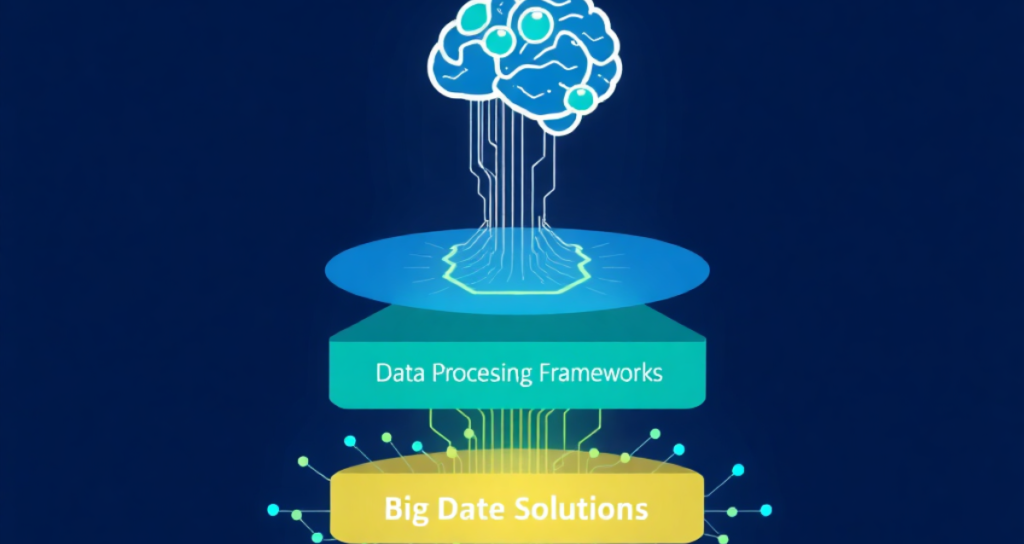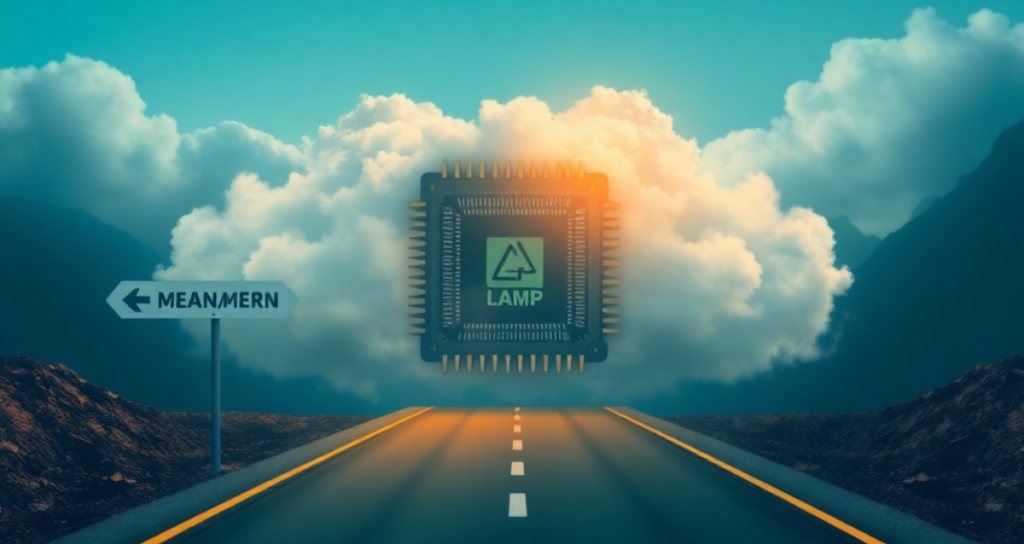Technology’s accelerated advancement is being driven by IoT, AI, and cloud computing, which requires creating more powerful and effective applications. Developers require robust technological platforms that seamlessly integrate hardware and software. Stacked Technologies is addressing the limitations of conventional silicon enhancements by introducing compact, high-power computing solutions, improving performance, and revolutionizing chip layering.
The demand for smaller and faster processors has led to increased innovation in the technology landscape. Comprehending the interplay between these factors, particularly the role of sophisticated packaging solutions like Stacked Technologies, is crucial for developing contemporary applications and enhancing innovation.
Table of Contents
Describe a Tech stack
A technology stack is a set of technologies used in developing, deploying, and administrating applications, including databases, hosting environments, frameworks, and programming languages. It encompasses the front-end interface and back-end infrastructure, determining the final product’s capabilities, constraints, and scalability, and is crucial for successful software projects.
Different Types of Technology Stacks
•Front-End Stack: Comprises frameworks such as React, Angular, and Vue.js, together with HTML, CSS, and JavaScript.
• Back-End Stack: Includes databases like MySQL, PostgreSQL, and MongoDB, along with Node.js, Python, Java, and PHP.
• Full-Stack Development: Integrates front-end and back-end elements.
The Development of the Technology Stack
Modern tech stacks have undergone substantial evolution to handle the complexity of the current digital environment. This evolution has resulted from many factors:
• Device Diversity: Today, apps must work flawlessly across smartphones, tablets, wearables, classic PCs, and Internet of Things devices.
• Data Deluge: Modern applications generate and handle massive amounts of data, requiring sophisticated data management and analysis technologies.
• Functional Complexity: Modern apps need real-time processing, machine learning, AI, and seamless service integration.
The Fundamental Components of a Modern Technology Stack
A modern tech stack includes:
- Containerisation: Docker and Kubernetes simplify application encoding and deployment.
- Monitoring and Performance Management: New Relic and Datadog give application health data.
- Business Intelligence and Analytics: Tableau and Power BI enable data-driven decision-making.
- Cloud Computing: AWS, Azure, and Google Cloud offer scalable infrastructure and platform services.
- Microservices Architecture: Separating applications into smaller services promotes flexibility and adaptation.
- API Management: Instruments for the administration and protection of application programming interfaces.
The Next Big Thing in Hardware Integration: Stacked Technologies
Stacked Technologies is pioneering a chip design revolution by advancing semiconductor integration. They use modern 2.5D and 3D chip stacking technologies to integrate memory, sensors, and CPUs into a small device. This innovative approach yields several key benefits:
1. Faster Computing Speeds: 3D chip stacking improves data transfer within a system by reducing the distance between components, minimizing signal delays, and enhancing overall performance. This results in faster data transfer and processing, as processing units and memory are nearby, allowing for faster calculations on-site.
2. Lower Power Consumption: Stacked Technologies’ 3D stacking technology reduces power losses due to data transmission across long distances on a circuit board. This technology integrates power management units closer to components, allowing for more efficient power delivery and minimizing wasted energy, similar to having a dedicated power source for each component.
3. Smaller Device Footprints: 3D chip stacking, a vertical integration technique, reduces the size of electronic systems by stacking chips instead of side-by-side on a circuit board. This allows for smaller, portable gadgets like smartphones and wearables while retaining power.
Stacked Technologies’ pioneering work improves computer speeds, power consumption, and device footprints, addressing contemporary electronics’ growing needs and enabling future breakthroughs.
Mastering AI Tech Stack

AI-driven apps are revolutionizing sectors, necessitating a specific tech stack for machine learning, deep learning, image identification, natural language processing, and predictive analytics. Stacked Technologies contributes hardware but does not directly provide software components. Recognizing the AI technology stack is crucial for building and delivering AI solutions, with specific diagrams depending on the application.
1. Data Processing Frameworks:
At the heart of any AI application lies data. Massive datasets are the fuel that powers machine learning models. However, raw data is rarely usable in its original form. It needs to be cleaned, transformed, and prepared for training. This is where data processing frameworks come in.
•TensorFlow: created by Google, is a robust open-source toolkit for numerical computing and extensive machine learning. It offers resources for constructing and training neural networks, an essential element of numerous AI applications.
• PyTorch: A widely utilized open-source framework, PyTorch is preferred by numerous researchers and developers due to its adaptability and user-friendliness. It is especially appropriate for deep learning applications.
AI frameworks are crucial for creating and training models and handling complex mathematical operations and optimizations. Understanding the technological stack is essential for AI developers.
2. Machine Learning Platforms:
Machine learning platforms offer a comprehensive environment for creating, deploying, and administering AI applications, including model versioning, experiment tracking, deployment tools, and interface with data processing frameworks.
• Azure AI: Microsoft’s Azure AI platform lets you develop, train, and deploy machine learning models on the cloud. Pre-trained models, customizable tools, and Azure connections are available.
• Google AI Platform: Like Azure AI, Google’s platform hosts AI development on the cloud. It connects with Google Cloud services and provides data preparation, model training, and deployment tools.
AI development platforms streamline app development and deployment for organizations, often being included in the chosen company technology stack.
3. Big Data Solutions:
AI applications handle terabytes or petabytes of data. Traditional data storage and processing technologies typically fail with large amounts. This is where big data solutions help.
- Hadoop: Distributed storage and processing of huge datasets. It divides data and processes it in parallel on a cluster of computers.
- Spark: Spark is a rapid, general-purpose cluster computing solution based on Hadoop. It offers data processing, machine learning, and real-time analytics solutions.
Many AI applications require large data storage, processing, and analysis. Big data solutions supply this infrastructure. They are essential to the tech stack.
The Role of Hardware and Companies like Stacked Technologies
Stacked Technologies is a key player in the AI technology stack, offering advanced chip stacking methods for powerful and energy-efficient CPUs and memory systems. Their vertical integration minimizes data transit, speeding processing and reducing power usage. While they don’t supply AI software, their hardware innovations enable the entire AI technology stack to reach its full potential, ensuring AI-driven apps reach their full potential.
The Importance of Advanced Packaging
Traditional chip production is outdated, and advanced packaging technologies like Stacked Technologies’ are crucial for advancement, enabling innovation by combining multiple chips for enhanced performance and efficiency.
Silicon-on-Silicon Integration and Die Stacking: Stacked Technologies specializes in two innovative packaging methods:
• Die stacking: Chips (dies) are stacked to create a 3D structure. This greatly decreases data transit between chips, improving communication and performance.
• Silicon-on-Silicon Integration: Chiplets (smaller, specialized chip portions) are bonded to a silicon interposer. Processors, memory, and I/O can be combined in one package.
These techniques provide several key advantages:
•Higher Transistor Density: By stacking chips or integrating chipsets, Stacked Technologies can effectively increase the number of transistors within a given area. This leads to greater computing power and more complex functionalities.
•Improved Energy Efficiency: Shorter component distances reduce power consumption. Mobile devices, where battery life is crucial, and large data centres, where energy costs are crucial, need this.
• Increased Computing Power: Energy efficiency and transistor density increase computing power.
This facilitates the execution of more intricate calculations, the acceleration of processing rates, and the capacity to manage demanding applications such as artificial intelligence (AI) and machine learning.
Technology Stack Diagram: A Visual Breakdown
A tiered technological stack represents all the components needed to construct and execute an application. Each layer represents a system feature in the diagram. Technology stacks often include:
• User Interface (Front-end): Direct user interaction. HTML, CSS, JavaScript, and React, Angular, or Vue are used to build it.
• Application Logic (Back-end): This layer handles server-side processing, data management, and business logic. Python, Java, Node.js, Django, Spring, and Express are used.
• Databases: This layer stores and retrieves data. The list contains MySQL, PostgreSQL, MongoDB, and cloud solutions.
•Infrastructure (Cloud/Servers): This provides the physical or virtual environment where the application runs. It can include cloud platforms like AWS, Azure, Google Cloud, or traditional servers.
•Hardware Innovations (Advanced Chip Packaging): This foundational layer, often overlooked, is where companies like Stacked Technologies contribute. Their advanced packaging technologies enable the creation of the powerful and efficient hardware that underpins the entire stack.
Benefits of Implementing Stacked Technologies in Contemporary Applications
Integrating Stacked Technologies’ advanced packaging solutions into modern applications offers several compelling advantages:
- Performance Boost: Higher transistor density increases processing power, speeding up difficult activities and improving user experiences.
- Space Efficiency: Smaller chip footprints allow smaller, lighter systems. Space-constrained mobile, wearable, and IoT applications require this.
- Lower Power Consumption: Optimized energy consumption extends mobile device battery life and lowers data centre running expenses. This helps the environment.
Case Study: MEAN/MERN and LAMP Stacks

These two stacks represent different approaches to web application development.
1. MEAN/MERN Stack: The acronym “MEAN” has four components: MongoDB, Express.js, Angular, and Node.js. On the front end, React takes the place of Angular in the MERN stack.
•Key Features:
- Full JavaScript: Both front-end and back-end development use JavaScript, simplifying development and allowing for code reuse.
- scalability: Developed to manage significant user loads and intricate data interactions.
- ·Flexibility: Ideal for a broad spectrum of web projects ranging from simple single-page apps to sophisticated corporate solutions.
• Use Cases: Perfect for applications needing dynamic user interfaces, real-time updates, and flawless data integration are their use cases.
2. LAMP Stack:
• Description: A classic and widely used stack for web hosting. “LAMP” stands for Linux (operating system), Apache (webserver), MySQL (database), and PHP (programming language).
•Key Features:
- Established and Mature: A long-standing and well-documented technology stack.
- Large Community Support: Plenty of resources and developers familiar with the LAMP stack.
- Cost-Effective: Often a more affordable option for basic web hosting.
•Use Cases: Suitable for traditional web applications, content management systems (CMS) like WordPress, and websites with moderate traffic.
Challenges in Adopting Stacked Technologies
While the benefits of Stacked Technologies’ advanced packaging are significant, adopting these technologies can present certain challenges:
1. Cost:
•Explanation: Stacked Technologies’ innovative packaging solutions need a large upfront expenditure. Development and production are more complicated than typical chip packing, increasing expenses.
• Impact: Smaller firms and projects with limited funds may struggle with this expense. For high-performance applications, the long-term performance and efficiency gains might offset the upfront expenses.
2. Technical Skills:
• Explained: Advanced packaging technologies demand expertise. Engineers must understand 2.5D and 3D chip stacking, heat management, and other modern production processes.
• Impact: Companies may need to train or hire skilled engineers. This can increase adoption costs and complexity.
3. Integration Issues:
•Explanation: Integrating advanced packaged chips into existing systems can sometimes be challenging. Compatibility issues with existing hardware and software components may arise. Careful planning and testing are necessary to ensure seamless integration.
•Impact: Integration issues can delay projects and raise development costs. Chip manufacturers and system integrators must work together to overcome these obstacles.
Stacked Technologies’ advanced packaging solutions offer significant performance and efficiency gains, contributing to AI, high-performance computing, and advanced mobile devices, with the potential to decrease costs and technical barriers.
Conclusion
The future of computing relies on the integration of software and cutting-edge hardware innovations like those pioneered by Stacked Technologies. Modern technology stacks will rely on stacked chip technology as demand for faster and more capable devices rises. Their semiconductor packaging innovations are extending Moore’s Law. By pushing the limits of chip technology, they enable modern application development. Their contributions are vital to the evolution of tech stacks and the future of electronics. The work of Stacked Technologies is essential for the continued progress of technology.
FAQs
1. Which technology architecture is optimal for AI development?
A combination of cloud services, Hadoop, TensorFlow, and Python is optimal for AI-driven applications.
2. Are Stacked Technologies’ solutions cost-effective?
While the initial costs are high, long-term energy efficiency and performance gains make them cost-effective.
3. How do Stacked Technologies enhance the computing capacity of a system?
It improves efficiency and increases transistor density by vertically integrating circuits.

